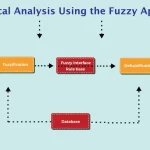What are the different tools in data-driven marketing?
Introduction
Data-driven marketing is a term that refers to marketing tactics that are based on insights gleaned from the analysis of large data acquired via customer interactions and engagements to forecast future behaviour. This entails knowing what consumer data you have, what data you can obtain, and how to organize, analyze, and utilize that data to improve your marketing efforts. This type of marketing varies from traditional marketing in that it allows companies to engage with customers at the right time, in the right place, and with the right product. When good data and analytics don’t back up traditional marketing, it entails many trials and errors. Personalization, better targeting, and accurate benchmarking are all possible with data-driven marketing, allowing marketers to improve their tactics over time.
Data-Driven Marketing Tools
Here are a few tools to think about for tracking, managing, and analyzing your customer data [1]:
Automation: E-commerce, app, and store data can all be integrated into your customer engagement platform’s automation layer and used across all campaigns and channels. Look for automation systems that include campaign data so you can track revenue growth as well. Fully integrated omnichannel automation streamlines your marketing across all touchpoints, not just specific channels, and simplifies cross-channel execution.
AI in Marketing: By incorporating artificial intelligence and predictive analytics into your marketing strategy, you may unlock hitherto untapped income potential by anticipating and, more precisely, forecasting your consumers’ successive movements. Before they churn, become inactive, or abandon cart, AI learns your customers’ habits and uses data in real-time to engage them with relevant, contextual customized communications. Artificial Intelligence, in conjunction with your automation technology, may assist you in optimizing send timings so that your communications reach clients at their most responsive moments.
Reporting: Today’s marketing teams are expected to make a difference in business outcomes; therefore, measuring marketing’s influence on revenue is crucial. You may make data-driven decisions that benefit your company’s bottom line if you use a customer engagement platform with built-in revenue attribution. Although marketing’s primary goal should be to create exceptional customer experiences, you’ll need a platform that provides detailed data on operational and strategic metrics, as well as keeps you informed about which channels are most lucrative and where you’re driving growth.
Conclusion
Data-driven marketing has a bright future ahead of it. Data-driven solutions are becoming an essential element of practical marketing efforts, alongside predictive and artificial intelligence marketing. This is due in large part to customers’ evolving demands and expectations for more customized experiences.
References:
[1] Spiller, Lisa. Direct, Digital & Data-driven Marketing. Sage, 2020. [2] Camilleri, Mark Anthony. “The use of data-driven technologies for customer-centric marketing.” International Journal of Big Data Management 1, no. 1 (2020): 50-63.


 Previous Post
Previous Post